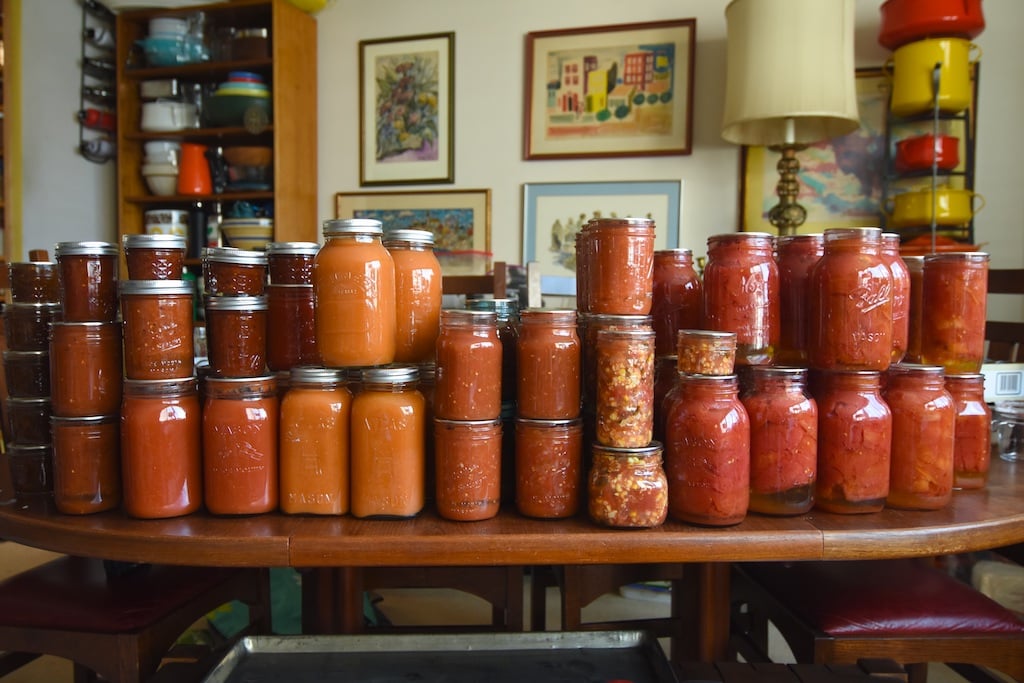
I get a lot of emails every summer (particularly during peach season) from people who have canned fruit for the first time and they’re wondering if their sealed jars are safe to be tucked away on the shelf. The reason they’re worried? The finished jars are sticky on the outside.
Friends, this is an entirely normal thing to experience when canning fruit in liquid like syrup, juice, or water. Raw or lightly cooked fruit flesh contains air. During the canning process, that air escapes from the fruit and pushes its way out of the jar (this is why we only tighten the canning rings to finger tip tight, that air needs to be able to exit the jar). This is normal.
Often, as the air leaves the jars, it pushes a little bit of the liquid that was in the jar out. This process of escaping air pushing liquid out can continue after the jars are removed from the canner (it is known as siphoning in the canning world). That sticky residue is the result of the liquid loss.


If your jars are sticky but the seals are good, there is nothing to worry about. Once the jars are completely cool, remove the rings and gently wash the sealed jars in warm, soapy water. Let them air dry and store in a cool, dark place.
If your jars are sealed, but have lost a lot of liquid, they are still good, but they aren’t going to hold their quality as long as those that still have their full complement of liquid. Make a point of using the jars with the depleted liquid first. If you notice that the top piece of fruit is discolored because it is not fully submerged, don’t worry. Just discard any with color or texture loss due to exposure and eat the remainder.


How to prevent liquid loss and sticky jars
Here are some things you can do to avoid getting into a sticky situation next time!
Consider making a hot packed preserve rather than a cold packed one. Cold packing means that you peel your peaches, layer them in jars, and then cover them with syrup. This creates a situation in which you are more prone to have liquid loss.
Instead, peel your peaches and drop them into hot syrup (or whatever liquid you are using as your canning medium). Then funnel the hot peaches into jars and cover with hot liquid. The short time the fruit spends in the liquid helps remove some of the air from the fruit flesh and makes for a jar that is less likely to siphon. This technique also allows you to get a bit more into each jar, which is very satisfying.
These Gingery Pickled Peaches are a great example of a hot packed peach.


Another thing you can do is let the jars rest in the canning pot for 5-10 minutes after the canning process is done. Rapid temperature change is one of the things that triggers liquid loss. Once your timer goes off, turn off the heat (if you have an electric stove, consider sliding the pot off the hot burner), remove the lid from the canning pot, and just let the jars cool down more slowly. After the time is up, pull one jar out. If it is still leaking liquid, return it to the pot and set another 5 minute timer.
Rest assured, even if your jars are sticky, you still have something delicious and safe to enjoy.

